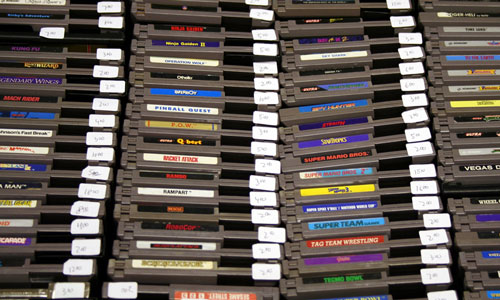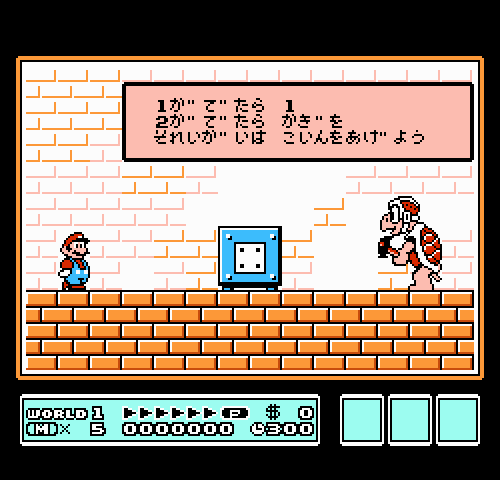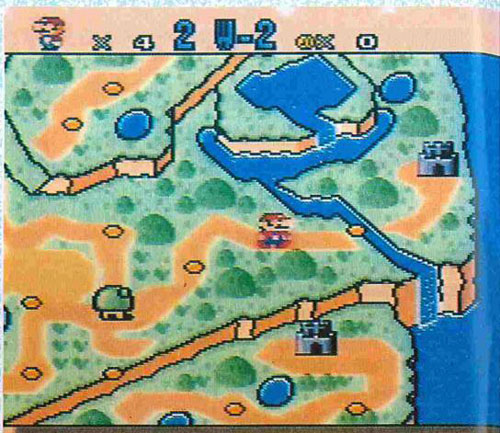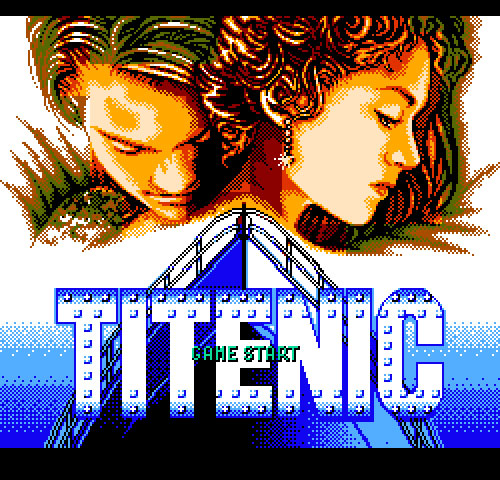Today in Tedium: It took a while for us to culturally admit it, but video games are a form of art on the level of many films—and that means that game developers are very much auteurs in the way that film directors are. (Or, depending on the game, schlockmeisters.) But as anyone who has ever used a Game Genie could tell you, there are things that developers don't want you to see, at a basic level far removed from a mere easter egg. Recently, I discovered that many of these discarded concepts and ideas not only remain on the cartridge or disc after their release, but that there's a fairly significant community working to find these missing items, with the goal of bringing them to life. Today's Tedium talks about the stuff that didn't actually make it in your favorite games. — Ernie @ Tedium

The Site That Uncovers New Parts of Your Favorite Video Games
Gaming culture is full of very narrow niches of fandom. It's part of what makes that culture so worthwhile and fulfilling.
The fandom that Alex "Xkeeper" Workman embraces involves playing archaeologist with the stuff that's actually hiding inside of the cartridges.
Xkeeper, a Nevada PHP developer and sysadmin, helps manage The Cutting Room Floor, a Wiki and online community dedicated to documenting the many variations of videogames out there. While Xkeeper didn't start the site, he has become an integral part of its success.
Why go to all this effort? Well, it comes down to getting new perspectives on places where a lot of childhoods were spent.
"The concept of missing or disabled content meshes well with things like urban exploration or backstage access. It's a rare look into a world we don't get to see often," he explained. "Game developers often only ever want people to see the 'finished' project, much like films. But through this research, gamers (and others) can see the ideas and work that was … well, left on the cutting room floor."
The process tends to be fairly community-driven: The archaeological "dig," so to say, is arduous work that requires digging through different types of programming data. Some aspects will involve digging through graphical tables to see if there's something in there that doesn't actually show up in the game. Other times, it might involve doing a deep dive into the source code and disassembling the game, with one person who's an enthusiast for a particular game taking up the lead.
If someone finds something good, a process called an "uncover" begins, and that's when things in the tight-knit community get interesting.
"The community aspect comes together once the discoveries are made, usually to help put the pieces together," Xkeeper says. "One person may find some unused graphics, and another person can use that discovery to perhaps stumble across the correct way to assemble them, or perhaps data defining what those graphics were originally used for."
With the high level of work that clearly has gone into this effort over the years, it makes sense that the site occasionally gets notices from the broader gaming community, such as when they helped uncover a prototype of The Legend of Zelda way back in 2010. It's the kind of thing that catches a lot of gamers by surprise.
"It's always surprising to see the sheer number of people who have no idea any of this content exists," he notes.
$700
The amount that The Cutting Room Floor's community of users paid to purchase an unreleased Nintendo DS prototype of Tetris. The existence of the game, produced by THQ but shelved in favor of a Nintendo-produced variation, was unknown to most people until earlier this month, when the website acquired a copy and released it online. The THQ saga has a lot of parallels to something that happened during the NES era, when Atari produced a version of the Russian puzzle game without a proper license, only to get forced off the market and usurped by a Nintendo-produced variation soon after.
Five Fascinating Examples of Hidden Content Highlighted on The Cutting Room Floor
- The New Tetris (N64): Nintendo 64-era game developer David Pridie died way too soon, passing in 2001 at the age of 30. But his legacy is hidden inside this cart, in which he joined a number of other programmers in hiding messages that they assumed would never see the light of day. (They were found right away, getting Pridie and the publisher, H2O, in trouble with Nintendo.) The messages are fascinating, Xkeeper says: "They're rude, they're vulgar, and they're also artistic, featuring ASCII art of the N64 logo, the H2O company logo … as well as drug art [like] marijuana and mushrooms."
- Pachi Com (Famicom): As highlighted by the prior item, a lot of examples of hidden content tend to be rants by angry programmers. But the programmer of this Japanese pachinko game had a good reason for his many comments hidden in the code of this title. "It's one of the earlier examples we have of 'executive meddling,'" says Xkeeper. "That is, the management ordered this programmer to add a very annoying noise during gameplay, and the programmer was so opposed to it that they left behind instructions to turn it off."
- Sonic the Hedgehog 2 (Genesis). If you remember the '90s-tastic Nickelodeon game show Nick Arcade, you may have seen God's Not Dead 2 star Melissa Joan Hart taking a turn at one of the Sega classic's early prototypes without realizing it. Sonic is notable for having numerous prototypes, one of which differed significantly from the final release and featured a handful of levels that didn't make it into the final game, including the Hidden Palace Zone.
- Erika to Satoru no Yume Bouken (Famicom): "I'm so glad it's over. You think it's nothing but good memories? Hell no! " This Japanese title features a programmer tearing apart the other members of the game's development team. Apparently, though, he didn't want anyone to find it, because it can only be seen using a very long delay, and in a very secret sequence. "It takes over an hour and a half to see, most of which is just waiting on the ending screen," says Xkeeper. It only came to light after someone on the Japanese image board 2ch revealed its existence.
- Mad Professor Mariarti (Amiga): One of the most notable memes spawned by the website, the game's music file features a threatening message from designer and musician Matt Furniss, who wants potential hackers to know: "i will find you where ever you are and break your legs". Xkeeper says that such bluntness was common among Amiga developers, and as a result, it's become "an ongoing joke" in the community.

How Mario Exemplifies the Cutting Room Floor Ethos
A good example of The Cutting Room Floor's approach in action is with the classic Super Mario Bros. games. A lot of video games have been analyzed and hacked to pieces over the years, but due to the high level of exposure these specific games got, even casual gamers are familiar with warp zones, Tanooki suits, and POW blocks. Heck, Nintendo released a game about a year ago that basically revels in the fact that users have hacked the series to pieces and made it their own.
In particular, Super Mario Bros. 3 and Super Mario World, both of which significantly expanded the scope of what a 2D-based platformer could be, have an insane amount of additional content that's almost impossible to find without actually digging through the source code of the game.
Mario 3 has a number of completely unused levels in various states of completion—levels that are playable via a debug mode that can be accessed with a Game Genie. (Since you probably don't have a Game Genie handy, you can watch this video here to see the levels in action.) Some levels feature the existence of enemies that don't appear anywhere else in the game, including a set of gold Cheep-Cheep fish that cluster together. Others feature the popular-but-underutilized Kuribo's Shoe, a famed one-level wonder that made it possible for Mario to jump on spiky objects.
And if you really want your mind blown, check out these unused bonus games, which feature Koopas and Hammer Brothers instead of Toad.
Super Mario World, meanwhile, is interesting specifically because of what didn't make it on the cartridge. While a significant amount of unused game data can be found on the cart, much of which is highlighted here, there's a lot of evidence that Super Nintendo owners got a much more elaborate game than was originally planned.
"Early screenshots reveal that the game went under an incredible transformation from a simple Super Mario Bros. 3 sequel into an entirely new game," Xkeeper explains.

Those early screenshots, which can be seen here, show variations of the game that feature Mario with a raccoon tail, along with a level map that looks pretty close to Mario's prior adventure.
Weird things actually in the cartridge that went unused the game include the apparent existence of a flying cage contraption that Mario would be stuck in during a level, along with a test level with the word TEST written in giant blocks.
"And don't forget to pay your respects to Uncle Sonic. Sony just doesn't get it."
— A comment left by developer Gary Lake inside retail copies of the Dreamcast game Sega Smash Pack Volume 1. Lake's message, left inside a file called ECHELON.txt, basically described how to use the game, which featured a number of classic Sega titles, as an emulator. (The file was named after a prominent Dreamcast hacking group at the time.) The timing of the Sega Smash Pack release was oddly symbolic: Literally the day it was released, Sega announced it was halting sales of the Dreamcast and getting out of the console market.
There are a lot of pages on The Cutting Room Floor. It's narrowly focused and clearly about a fairly arcane topic, but it's definitely a place where one can easily lose a weekend diving through factoids.
The rabbit holes lead to interesting places. One of my favorite finds on the site involves the pirated NES game Titenic, a bootleg adaptation of the movie Titanic produced by the prolific pirate cart house Hummer Team. The team, which infamously produced the entertaining Mario/Sonic mashup Somari, was no stranger to blatant copyright infringement.

But even this game, which hilariously turns Jack Dawson into a ass-kicking ninja on a sinking ship, has some deleted scenes—in fact, due to its unusual development process, the game's cutscenes (NSFW, because it includes naked 8-bit Kate Winslet) don't show up in the final game and can only be accessed by hacking at the ROM.
I think around this time, I found myself at the other end of the rabbit hole.
Since we're talking copyright, the question comes to light: Do game companies complain about what The Cutting Room Floor does? Xkeeper says they've mostly avoided scrutiny.
"Outside of small indies sometimes commentating on things uncovered, no major company has reacted to anything we've found," he says. "Probably for the best; this sort of thing is likely in a deeply gray legal area, even as important as it is."
Let's hope that, if the big game companies ever do notice, they see this work—largely led by fans, done for scraps of donations on Patreon—brings new understanding to works that are increasingly earning the artistic respect they've long deserved.
It makes the stories around these great (or not-so-great) games even better.




